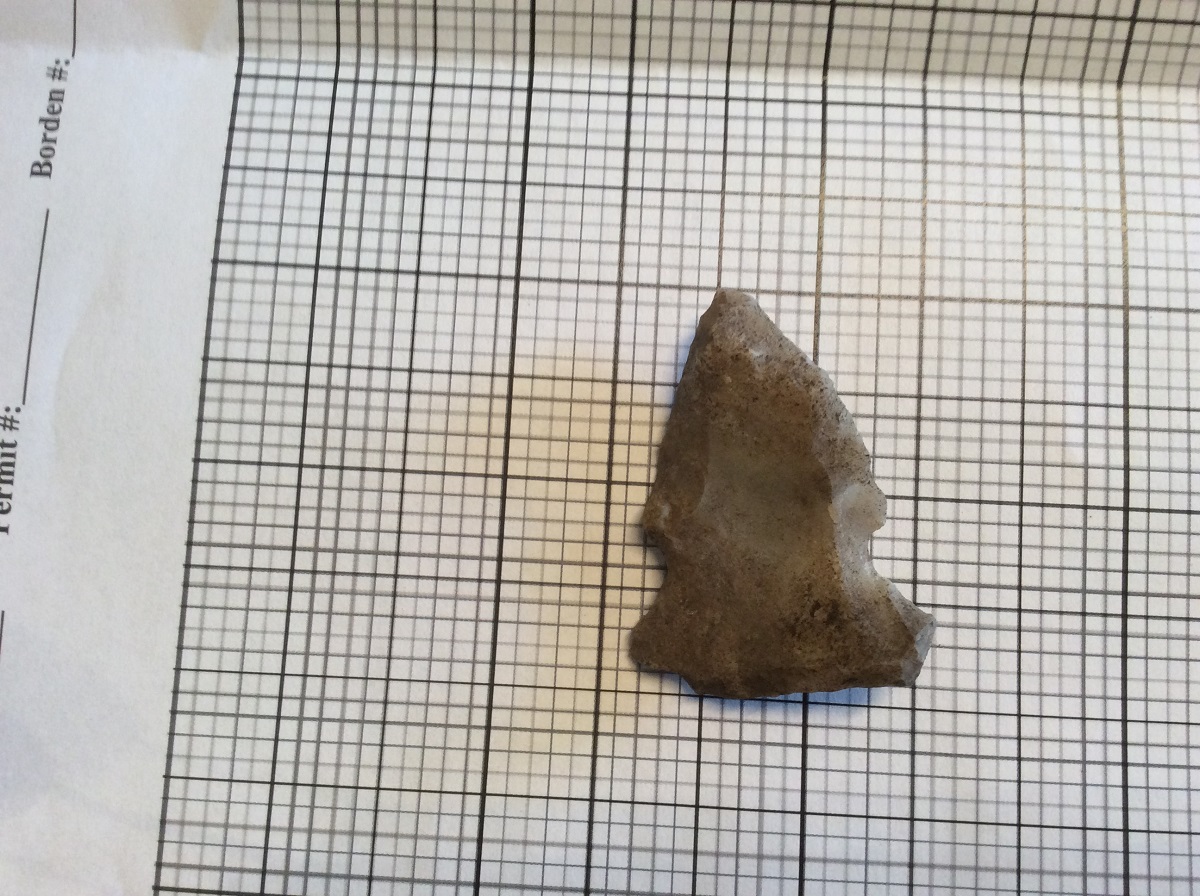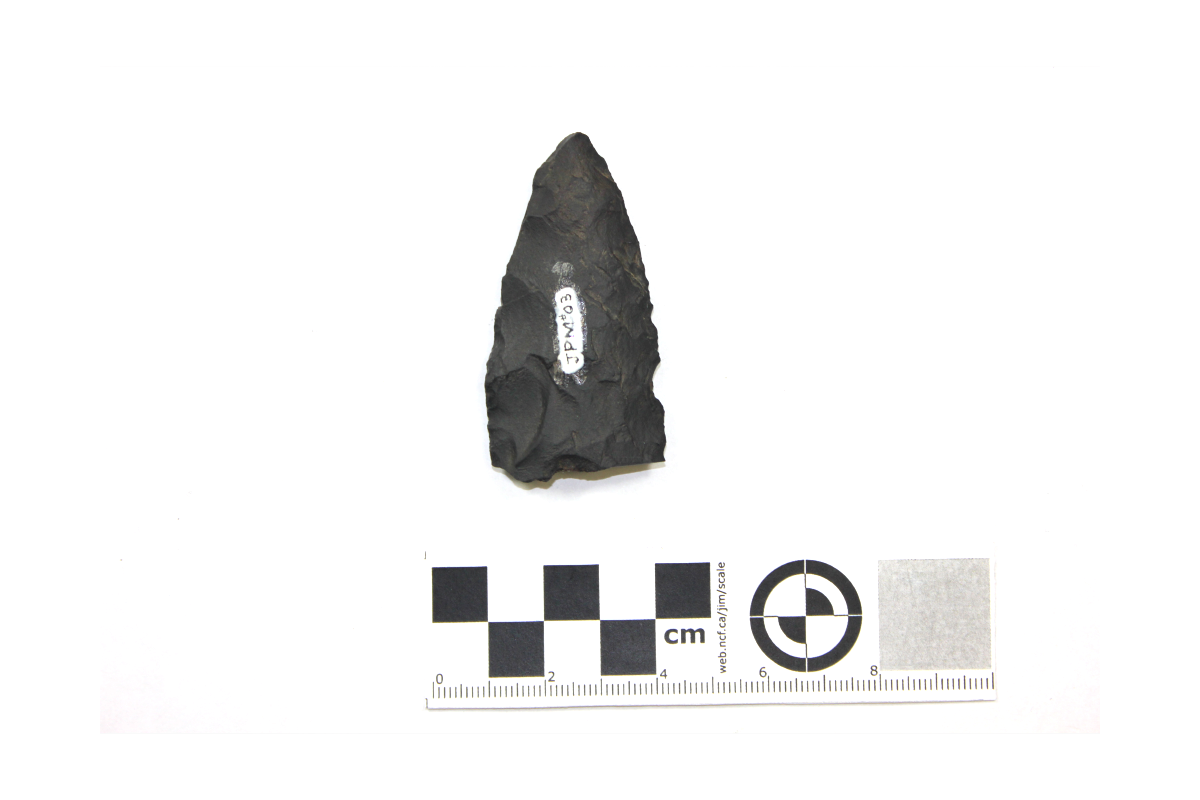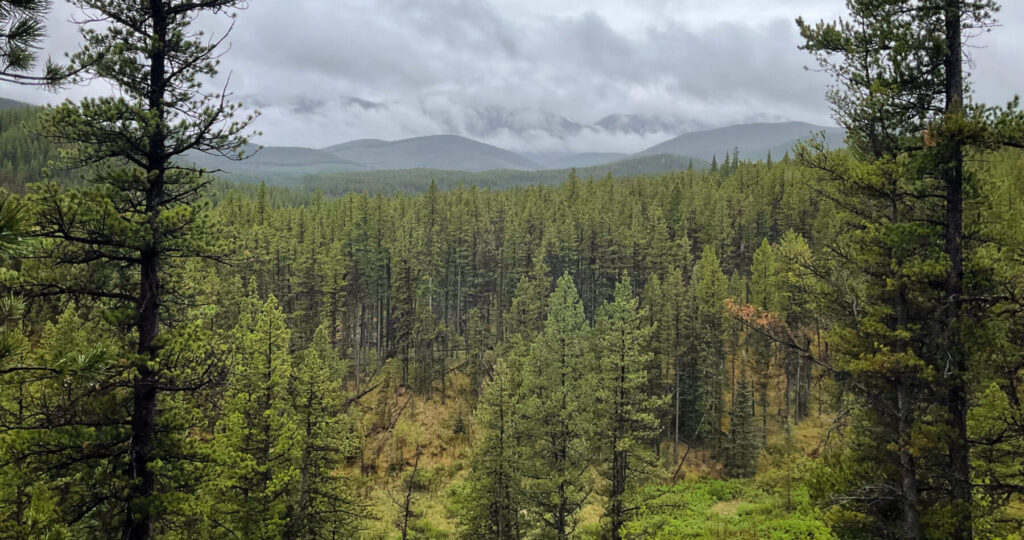Post Category : Heritage Management Local Archaeology
Publicly Reported Sites
In 2016 two members of the public contacted Tree Time Services to report archaeological sites that they had discovered. Our Archaeological Roadshow was being hosted by the Sundre Museum, during which we were approached by the first person who had found a side-notched projectile point while planting her garden. We arranged to meet her at her home to record the site. We took photos of her garden and recorded the location using a hand-held GPS unit of where she recalled finding the projectile point. We also took photos of the projectile point itself. Our time with her allowed us to collect the data we needed to report the site as EkPp-18. While the site is highly disturbed due to the construction of the subdivision it is still important to record the location of her site and what was found. This information will help future archaeologists to predict where other similar sites in the area can be found.

The second community member to contact us got in touch with Kurtis to let him know about six sites he found while hiking and hunting in the region. Teresa and I took a day off from working for our client to spend with him visiting the sites he had found. While we were there, we recorded the locations of where he had found artifacts, took photos and conducted surface inspections resulting in the identification of additional artifacts. The artifact collection is being catalogued by Tree Time so that we can record data to the standards required by the Royal Alberta Museum. This way we can submit site forms to the government of Alberta, just as we did for the previous person’s site. These site forms will have a detailed description of the archaeological sites found and a full listing of the number and types of artifacts found at each site. A copy of these catalogues will be sent to the Royal Alberta Museum when we have completed the reporting process. The museum needs a copy of the catalogue so that if any future work is completed at these sites they will be able to provide the researchers with a starting catalogue number, avoiding duplicates in the database. This way it is easy for researchers to know how many and what kinds of artifacts have come from a particular site, even if the museum doesn’t have the artifacts themselves.

We are always happy when people are willing to share their archaeological finds with us because the government cannot protect sites they don’t know exist. Researchers also need this information to build predictive models and to choose what areas would be interesting to conduct more research at.
If you have found an archaeological site and would like help to record it please contact Kurtis at 780-472-8878 or email archaeology@treetime.ca.



